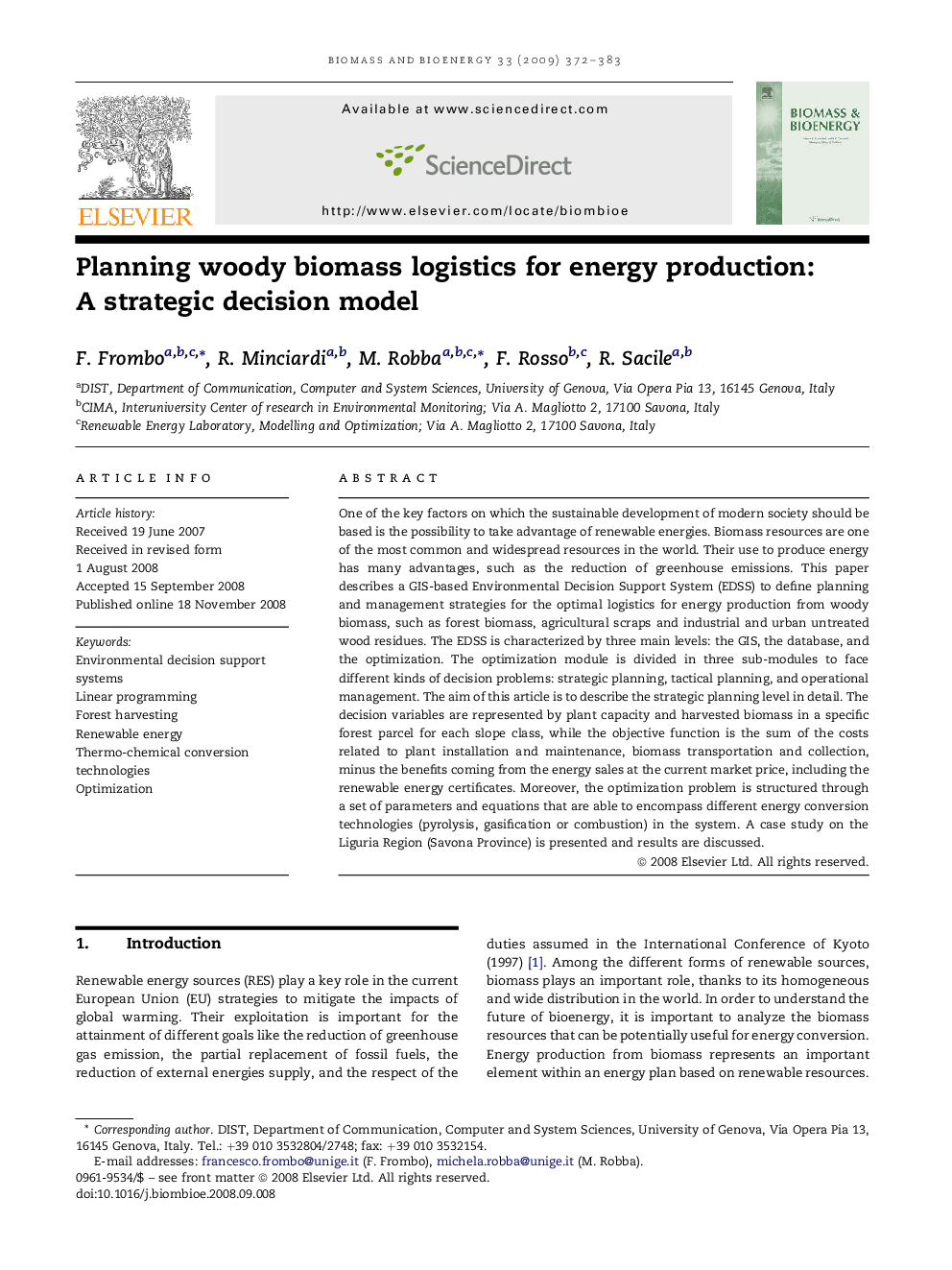| کد مقاله | کد نشریه | سال انتشار | مقاله انگلیسی | نسخه تمام متن |
|---|---|---|---|---|
| 678269 | 888638 | 2009 | 12 صفحه PDF | دانلود رایگان |

One of the key factors on which the sustainable development of modern society should be based is the possibility to take advantage of renewable energies. Biomass resources are one of the most common and widespread resources in the world. Their use to produce energy has many advantages, such as the reduction of greenhouse emissions. This paper describes a GIS-based Environmental Decision Support System (EDSS) to define planning and management strategies for the optimal logistics for energy production from woody biomass, such as forest biomass, agricultural scraps and industrial and urban untreated wood residues. The EDSS is characterized by three main levels: the GIS, the database, and the optimization. The optimization module is divided in three sub-modules to face different kinds of decision problems: strategic planning, tactical planning, and operational management. The aim of this article is to describe the strategic planning level in detail. The decision variables are represented by plant capacity and harvested biomass in a specific forest parcel for each slope class, while the objective function is the sum of the costs related to plant installation and maintenance, biomass transportation and collection, minus the benefits coming from the energy sales at the current market price, including the renewable energy certificates. Moreover, the optimization problem is structured through a set of parameters and equations that are able to encompass different energy conversion technologies (pyrolysis, gasification or combustion) in the system. A case study on the Liguria Region (Savona Province) is presented and results are discussed.
Journal: Biomass and Bioenergy - Volume 33, Issue 3, March 2009, Pages 372–383